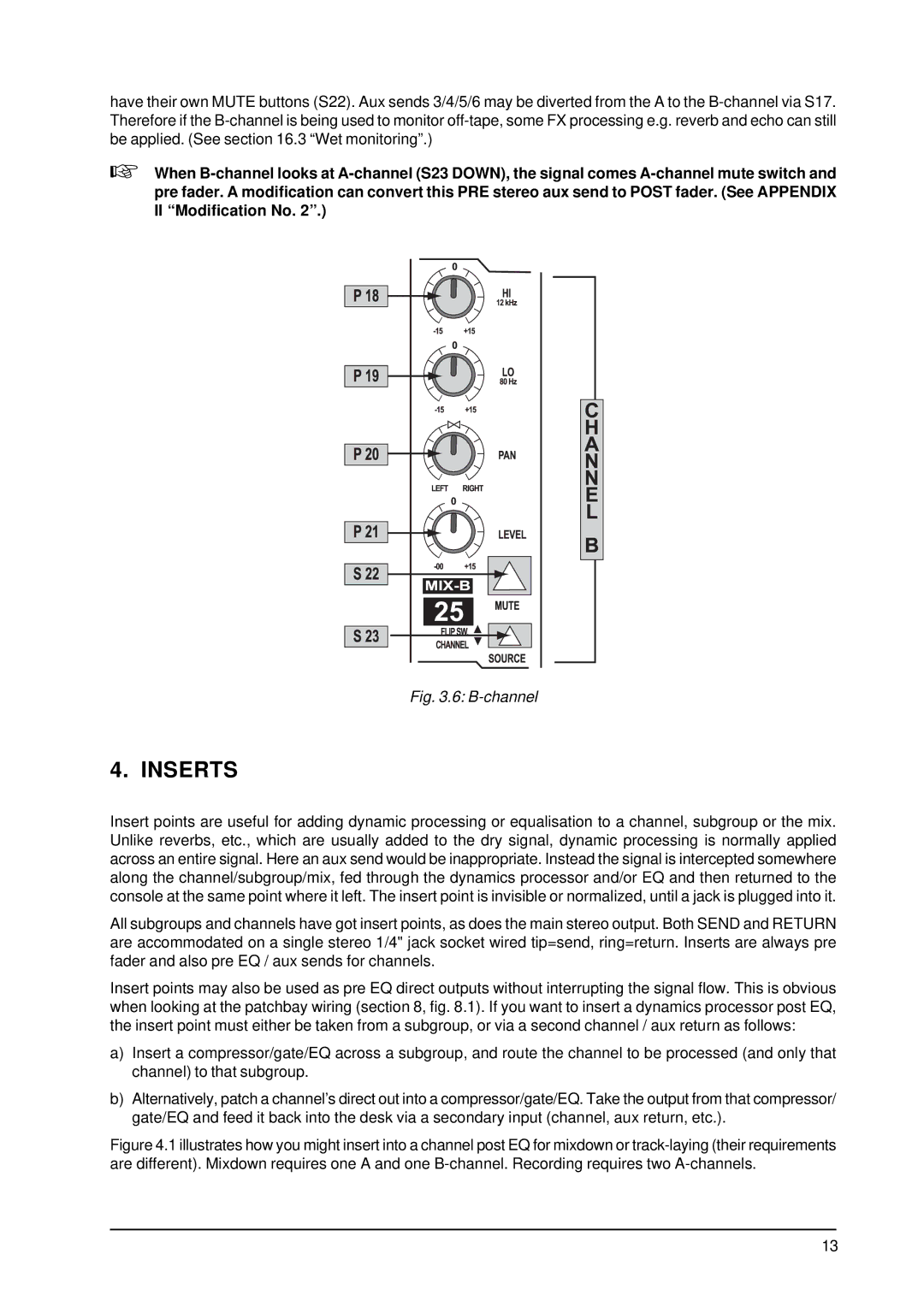
have their own MUTE buttons (S22). Aux sends 3/4/5/6 may be diverted from the A to the
+When
Fig. 3.6: |
4. INSERTS
Insert points are useful for adding dynamic processing or equalisation to a channel, subgroup or the mix. Unlike reverbs, etc., which are usually added to the dry signal, dynamic processing is normally applied across an entire signal. Here an aux send would be inappropriate. Instead the signal is intercepted somewhere along the channel/subgroup/mix, fed through the dynamics processor and/or EQ and then returned to the console at the same point where it left. The insert point is invisible or normalized, until a jack is plugged into it.
All subgroups and channels have got insert points, as does the main stereo output. Both SEND and RETURN are accommodated on a single stereo 1/4" jack socket wired tip=send, ring=return. Inserts are always pre fader and also pre EQ / aux sends for channels.
Insert points may also be used as pre EQ direct outputs without interrupting the signal flow. This is obvious when looking at the patchbay wiring (section 8, fig. 8.1). If you want to insert a dynamics processor post EQ, the insert point must either be taken from a subgroup, or via a second channel / aux return as follows:
a)Insert a compressor/gate/EQ across a subgroup, and route the channel to be processed (and only that channel) to that subgroup.
b)Alternatively, patch a channel’s direct out into a compressor/gate/EQ. Take the output from that compressor/ gate/EQ and feed it back into the desk via a secondary input (channel, aux return, etc.).
Figure 4.1 illustrates how you might insert into a channel post EQ for mixdown or track-laying (their requirements are different). Mixdown requires one A and one B-channel. Recording requires two A-channels.
13
